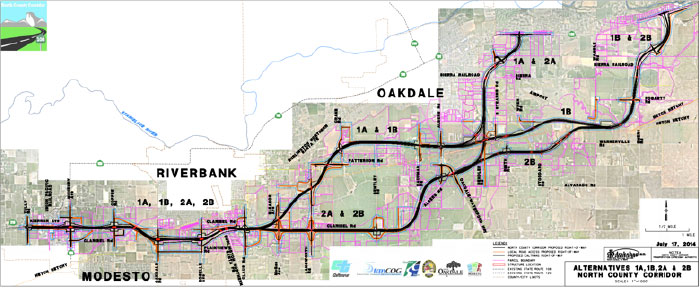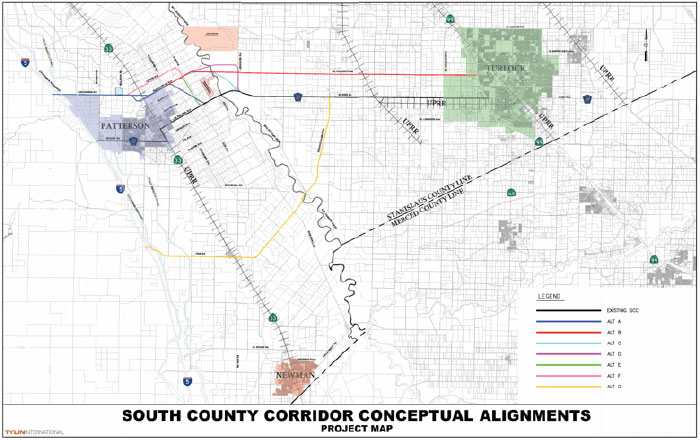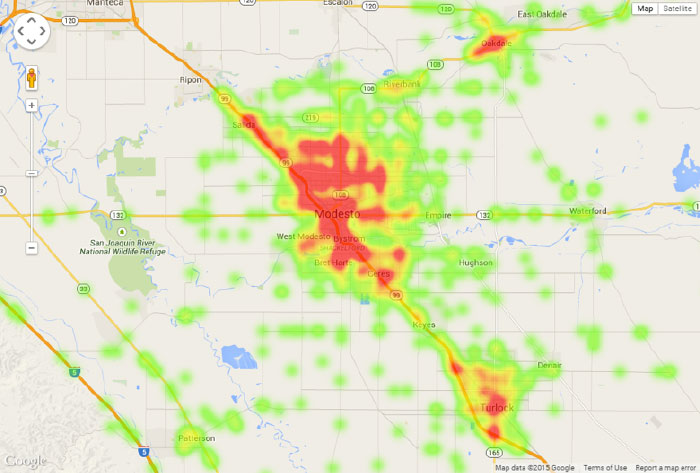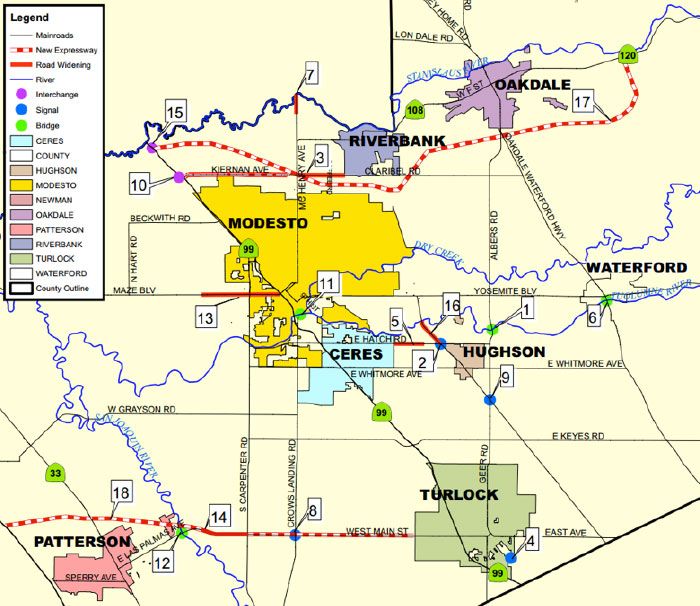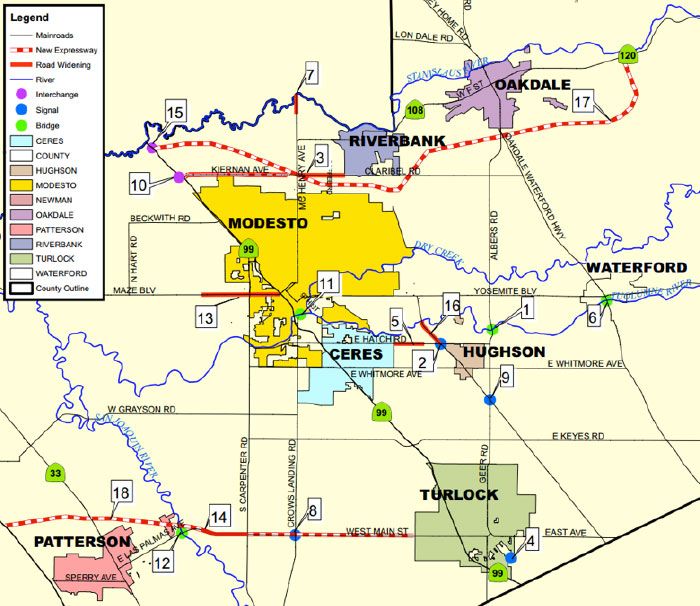
However, in the Central Valley, business as usual persists. While Bakersfield pursues bulldozing a neighborhood for a half-billion dollar freeway to grow the city’s west side, Stanislaus County is moving forward with two major projects, the North County Corridor and South County Corridor, that could reshape the region’s development.
Stanislaus County is among the fastest growing regions in California. Home to cities including Modesto, Turlock, Patterson, and Oakdale, the region is a key statewide hub for agriculture and logistics. The region’s population has more than doubled since 1980, and is projected to grow by another 40 percent over the next 25 years. This growth has generated a number of negative environmental consequences: the Modesto region is among the most polluted in the country.
In contrast to the past decades of sprawl, the Stanislaus County Council of Governments (StanCOG) has prioritized multimodal transportation options that support a more sustainable, healthy, and equitable region. In support of SB-375, StanCOG’s 2014 Regional Transportation Plan / Sustainable Communities Strategy (RTP-SCS) seeks to match its limited financial resources for transportation with sustainable land use outcomes in support of SB-375. The RTP/SCS includes the following goals:
Goal 1. Mobility & Accessibility
Improve the ability of people and goods to move between desired locations; and provide a variety of transportation choices.
Goal 2. Social Equity
Promote and provide equitable opportunities to access transportation services for all populations and ensure all populations share in the benefits of transportation improvements and provide a range of transportation and housing choices.
Goal 3. Economic and Community Vitality
Foster job creation and business attraction, retention, and expansion by improving quality of life through new and revitalized communities.
Goal 4. Sustainable Development Pattern
Provide a mix of land uses and compact development patterns; and direct development toward existing infrastructure, which will preserve agricultural land, open space, and natural resources.
Goal 5. Environmental Quality
Consider the environmental impacts when making transportation investments and minimize direct and indirect impacts on clear air and the environment.
Goal 6. Health & Safety
Operate and maintain the transportation system to ensure public safety and security; and improve the health of residents by improving air quality and providing more transportation options.
Goal 7. System Preservation
Maintain the transportation system in a state of good repair, and protect the region’s transportation investments by maximizing the use of existing facilities.
An extensive visioning process was undertaken with the public in support of the RTP/SCS to develop these goals, indicating a clear mandate for change.
However, Stanislaus County appears to continue a business-as-usual approach to sprawl-enabling transportation planning. Despite an existing backlog of nearly $2 billion in roadway maintenance and significant needs for transit and active transportation investments, Stanislaus County is moving forward with two freeway expansion projects that could total $700 million. These projects, which have been under discussion for years, are largely a product of a bygone era and contradict the intent of StanCOG’s RTP/SCS to reduce greenhouse gas emissions and vehicle miles traveled. With the economy picking up, both have recently been revived.
• The North County Corridor is a proposed 18 mile freeway from CA-99 to CA-120 connecting Modesto, Riverbank, and Oakdale. It travels through farmland on the fringe of each city. According to Caltrans, the purpose of the project is to “improve regional network circulation, relieve existing traffic congestion, reduce traffic delay, accommodate future traffic, benefit commerce, and enhance safety.” The North County Corridor is featured in the RTP/SCS as a high-priority regional project. It is estimated to cost $335 million. Four potential alignments are currently undergoing environmental review in the CEQA/NEPA process.
• The South County Corridor is a proposed 18 mile freeway from CA-99 to I-5 connecting Turlock and Patterson. The project is not featured in the RTP/SCS, but remains of high regional interest. A feasibility study is currently underway to examine potential alignments and costs. According to the statement of purpose and need, the project’s purpose is to support goods movement, improve safety, enhance connectivity, improve air quality, and encourage economic development. The project’s cost is unknown at this time, but may be roughly comparable to the North County Corridor.
What’s most concerning is these projects are being pursued in the name of safety without a rigorous analysis to demonstrate their safety benefits relative to other investments. It’s true that rural roads are generally more dangerous: people have less margin for error on undivided, poorly lit roads, and at the same time are more likely to drive faster, be less attentive, and not wear a seatbelt. However, in Stanislaus County, the vast majority of collisions and traffic fatalities are within urbanized areas, particularly in Modesto. While road safety improvements are needed throughout the county, it’s poor policy to concentrate limited resources into two corridors in the name of safety while the rest of the county receives few improvements. A more cost-effective and equitable approach is needed.

